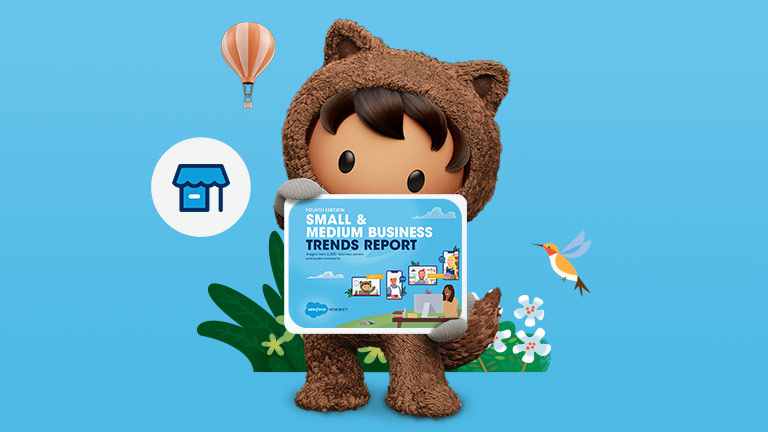When it comes to small business product development, SMEs face several ongoing challenges and concerns. For one, smaller budgets mean higher levels of risk when developing new products and services. This not only impacts the projects that SMEs choose to take on; it affects their decision-making at nearly every step of the process.
When every decision can have seismic consequences, it can be tempting to grow small and minimise risk. But innovation is key to thriving in a new climate. Companies that play it safe may find it challenging to take the calculated risks needed to drive them into the future.
Small business product development isn’t easy. Small, tight-knit teams may find themselves overworked, underfunded, and suffering from a lack of expertise. But things are far from hopeless. We’re in a new frontier, after all, where customer behaviour is changing, new ways of doing business are emerging, and opportunities abound. The answer is not to play it safe but to play it smart.
Let’s take a look at how SMEs can improve their small business product development, drive productivity and chart a course towards success.
Facing up to the challenges of small business product development
SMEs without the resources of their larger counterparts have to minimise risk. When one poor choice can mean business-wide failure, SMEs must pick their projects carefully. The ROI at the end of the journey has to be worth the financial investment and inherent risk involved. For this reason, many SMEs tend to focus on creating MVPs, or minimum viable products, when approaching small business product development.
Smaller businesses also need to be more targeted in their approach to developing products. Many small businesses won’t have full-time product development teams, which can lead to inefficient processes and skills gaps. This can pose a challenge when creating products or services that require expertise beyond what a team possesses. It can also create a hurdle for getting to market quickly, making all the difference in a competitive landscape.
Tips for small business product development
Leverage external expertise to fill skills gaps
SMEs will likely have a minor in-house development team. They may count on some team members to fill several roles. And while it’s vital to maximise internal talent, don’t be timid about bringing in external talent with specialised skillsets. There are so many steps in small business product development – from marketing to design to production – that it can be difficult for a small team to handle every aspect at the high level required for success.
Innovate to improve processes and procedures
One of the critical concerns for SMEs is driving productivity. For small teams to keep up with their competitors – or surpass them – they need to maximise their potential. Innovation is one the easiest ways to do this. After the team leader has created a strategy and delegated tasks, look for innovative solutions to improve processes and procedures, address potential pain points, and optimise the team’s talents. For instance, AI can automate routine tasks and free your team to concentrate on more impactful work.
Use your collective business brain
One great idea can change the world, and best of all, brainstorming is free. Think of your team’s creativity as the great equaliser – you never know when a paradigm-shifting idea might appear. When approaching small business product development, it’s also important to listen to your customers, who will likely have some pretty exciting ideas about their needs and wants. Gathering insights from all the stakeholders will provide a good roadmap for where you can provide value.
Do market research and run a SWOT
It’s hard to properly analyse risk and evaluate potential ROI without truly understanding the needs of the market, as well as your ability to serve it. Identifying a need for a product or service is a great place to start, but you also have to evaluate your business’s ability to deliver the right solution. Taking a traditional approach to market research will provide valuable data on your audience, but it won’t tell you if you can provide what they need. Running a SWOT analysis for small business will give you a view of your business’s strengths and weaknesses and help identify which opportunities are right for you.
Prepare your testing ground
Getting a product or service to the finish line can be a long process. There will be steps to take even after development is complete. If your product or service needs to pass tests or be certified, you’ll want to book in with the necessary regulatory bodies well ahead of time. Nothing puts a damper on a product launch like having to delay it due to red tape. It’s an even tougher pill to swallow if you get beaten to market while waiting. If you’re developing a unique product, it’s a good idea to get a cost-effective prototype made as early in the process as possible. This will give you a chance to solicit feedback and make any adjustments needed.
Level up your marketing strategy
Multichannel marketing strategies have become standard in the new normal, so you’ll want to ensure that you engage customers on the channels they use most often. Look at how your product or service‘s USP (Unique Selling Proposition) can be showcased. Do this through social media, brick-and-mortar stores, email campaigns and promotional events. Also, check that your marketing strategy is aligned with the overall voice of the brand. You can use CRM tools to craft personal communications and build better relationships after you’ve created a plan to reach audience segments on their favourite channels.
Small business product development is a marathon, not a sprint
After you’ve sent your new product or service into the world, your journey is just beginning. Small businesses need to innovate constantly to keep up with a landscape that is in constant flux. Today’s consumers expect ‘new’ on an ongoing basis, and the long product lifecycles that once anchored SME development strategies are increasingly shrinking.
Small businesses may not release as many products – or as often – as their larger counterparts, but they should budget for regular development. Listening to feedback from customers and brand advocates will help point businesses in the right direction. In contrast, an innovative team mindset, a skilled-up workforce, and plenty of sweat equity will help deliver winning results. For today’s SMEs, regular small business product development offers a path to a brighter tomorrow.
To see SME leaders improve their small business product development to keep up with the new landscape, download our free eBook, 5 Productivity Tips Every Small Business Needs to Know.






